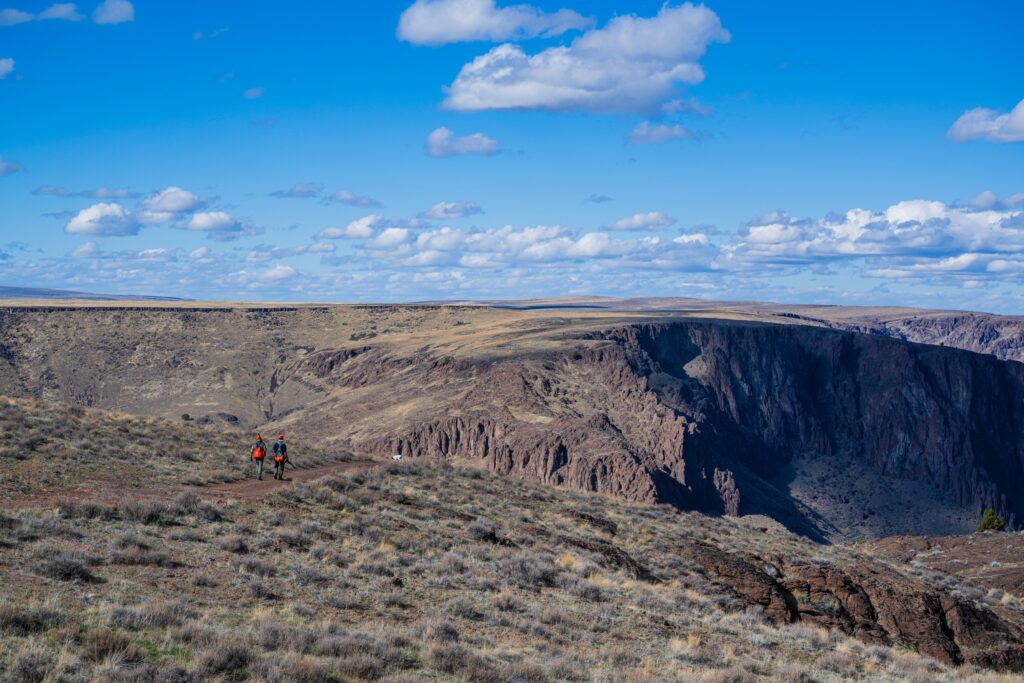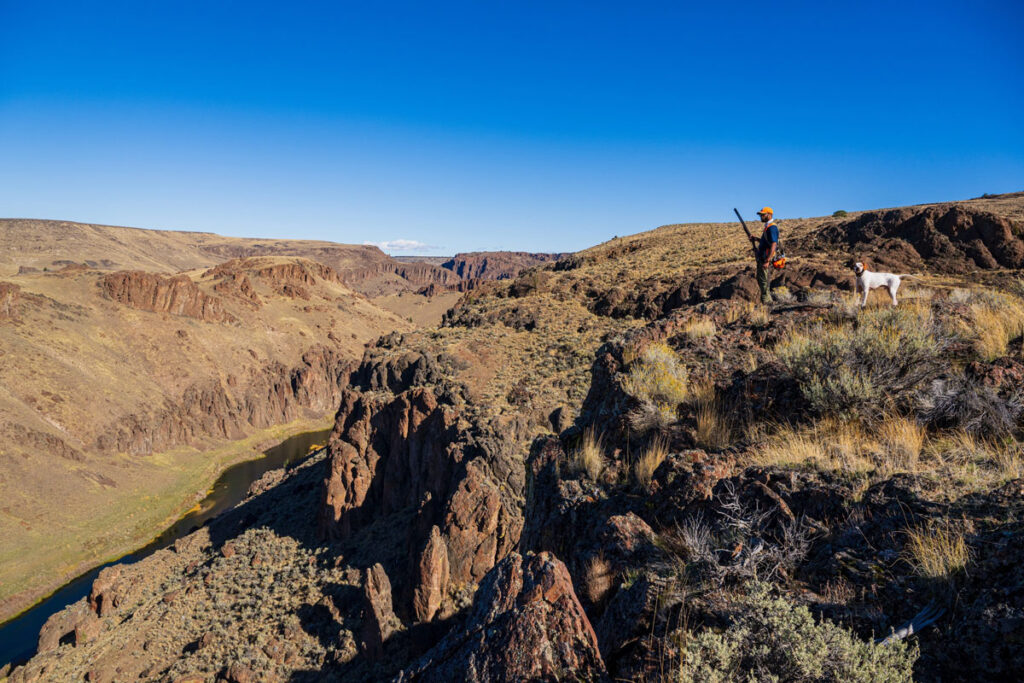
Organization encourages BLM to conserve big game habitats & hunting and fishing areas as it advances solar development on public lands
Today, the Bureau of Land Management released a draft plan that—when completed—will guide utility-scale solar development on federal public lands across 11 western states. The draft is a proposed update of BLM’s 2012 Western Solar Plan, which identified areas in Arizona, California, Colorado, Nevada, New Mexico, and Utah with high solar potential and low resource conflicts to streamline solar development. The update expands application of the Western Solar Plan to include potential solar development on public lands in Idaho, Montana, Oregon, Washington, and Wyoming.
“We recognize that public lands in the west provide important options to help meet the nation’s renewable energy needs,” said Jon Holst, wildlife & energy senior advisor for the Theodore Roosevelt Conservation Partnership. “Our public lands also contain critical unfragmented habitats for fish and wildlife populations that offer world class hunting and angling opportunities. We will be looking at the details of this draft plan to make sure that the interests of hunters and anglers are incorporated.”
The TRCP and partners have been involved in BLM’s efforts to update the Western Solar Plan since scoping began in late 2022. The updated plan is an important step toward meeting the Administration’s goals of deploying 25 GW of renewable energy on public lands by 2025 and to have a 100 percent clean electricity grid by 2035. The BLM and Department of Energy estimate that approximately 700,000 acres of public lands will be needed to meet the Administration’s goals for solar deployment. The TRCP is committed to working with our membership, partners, state and local governments, and other key stakeholders to facilitate a successful outcome for the Western Solar Plan that advances the development of solar energy in a manner that also conserves our natural resources and sporting heritage.
This release kicks off a 90-day comment period where the public will have an opportunity to provide input on the alternatives and other management options presented by the BLM in the draft plan. Public input will inform a Final Programmatic Environmental Impact Statement and Record of Decision. The public can submit written comments through April 18, 2024. More details are available on BLM’s Solar Program website.
Find the BLM press release here.
Find TRCP’s scoping comments here.
Find TRCP’s public land solar blog here.
TRCP’s new Oregon Field Representative, Tristan Henry, looks back on a recent chukar hunt and forward to the work that must be done to safeguard this iconic landscape
While reminiscing about a recent chukar hunt in the Owyhee Canyons and my new role as the Oregon field representative for the Theodore Roosevelt Conservation Partnership, I was reminded of a quote penned by Walt Whitman almost 150 years ago:
“As to scenery, while I know the standard claim is that Yosemite, Niagara Falls, the Upper Yellowstone, and the like afford the greatest natural shows, I am not so sure but the prairies and plains, while less stunning at first sight, last longer, fill the esthetic sense fuller, precede all the rest, and make North America’s characteristic landscape.”
I’d have to agree with old Walt. I’ve been lucky to spend many days in the field chasing chukar, hunting mule deer, and throwing dry flies and streamers across the vast expanse of public lands that constitute southeast Oregon’s Owyhee country. It’s a rare treat to sip coffee with a bird dog by your side around a morning fire as you watch the first burst of sunlight rise above the Owyhee plateau. Out there, in sagebrush-covered solitude, it can be tempting to want to save the last best places for ourselves, but sharing it is something far more powerful.

In late October of last year, I joined a group of hunters and photographers for a few days to camp, hunt, and capture images and stories about this remote and beautiful canyon country. A few in our group were lucky enough to experience the Owyhee for the first time: Sav Sankaran of the Orvis company and Durell Smith of the Sporting Life Notebook had loaded their truck more than 2000 miles away and drove 31 hours for their first shots at wild chukar with renowned outdoors photographer Brian Grossenbacher there to capture the moment. Conservation staff and local members of the Owyhee Sportsmen and their families rounded out our camp, and I can say with a great deal of confidence I would share a fire with all of them any day.
We camped in as stunning a desert campsite as I have ever seen. At the confluence of several streams, mallards circled, redband trout finned, and after a frigid night, we woke to cowboy coffee and the sound of chukar greeting the sun from the rimrocks. We discussed our strategy for the morning hunt with scalding bacon that hardened quickly in the morning cold. After the dogs were collared, we drove out of the canyon in the direction of those distant “chucking” partridge. Shutting the tailgate, I heeled my dog, beeped his collar, and began walking westward through sage and rimrock.

“It’s a rare treat to sip coffee with a bird dog by your side around a morning fire as you watch the first burst of sunlight rise above the Owyhee plateau.”
Sturgil, my 4-year-old wirehair, and I had shared some incredible days in the early weeks of Oregon’s upland season, and though this one started out a mess, we ended on a string of high notes. Birds were plentiful and I walked back to the truck with a heavy vest and one sequence etched proudly in my mind: A productive point, the approach, and a cloud of sixes finding a bird.
After a particularly wet spring brought much needed moisture to the thirsty high desert of the northern great basin, it was easy to see glimmers of that once-healthy rangeland. The weight in my vest was tangible proof of the productivity of the place, but thousands of acres of cheatgrass, medusahead, Russian thistle, and knapweed remind us just how much more needs to be done to protect the Owyhee.
Back at camp, we exchanged stories of the day over bourbon and under a star-filled sky. With a shared love for birds, bird dogs, and a thirst for community in wild places, we traversed our memories, each ridge and valley telling a story of survival and adaptation. As hunters, I suppose we’re used to navigating the thin margin between abundance and austerity, and we may be uniquely experienced in finding hope where others see desolation. There’s proof enough of that in the photos. These moments captured the stark magic of the Owyhee just about perfectly.
So few places in the U.S. offer such a complete escape from the hustle and bustle of daily life that one can truly lose oneself in nature. Fewer still offer all this splendor while also supporting grazing, hunting, fishing, and a myriad of other multiple-use purposes, but the Owyhee does. As a lifelong Oregonian and hunter, I’ve come to understand that safeguarding such places is not just an environmental imperative: it’s a moral one. It is our duty to ensure that future generations can experience the same sense of connection and awe that we find while walking in on a point.
Learn more about the Owyhee Sportsmen and how you can help protect the Owyhee Country HERE.
And learn more about TRCP’s work in the Pacific Northwest HERE.
Photo credit: Brian Grossenbacher